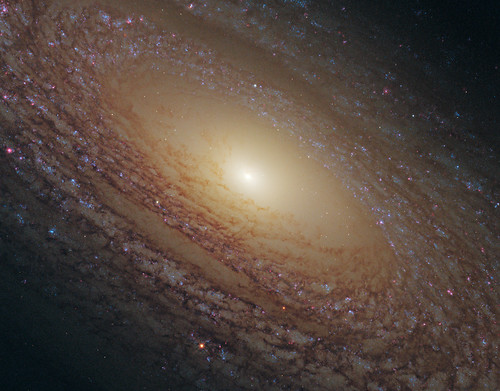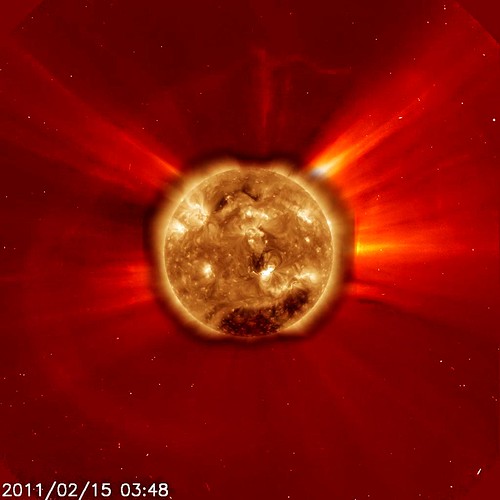Awesomeness Round-up – 2/22/11
- By Sara Mitchell
- February 22, 2011
- Comments Off on Awesomeness Round-up – 2/22/11
Due to the one-two punch of a federal holiday and a bit of wintry weather that caused NASA Goddard to open a few hours late today, here’s a belated awesomeness round-up!

Credit: NASA/Goddard Space Flight Center/Bill Hrybyk
One year ago, I had just returned to Goddard from an epic adventure – over a week in Florida for back-to-back launches, stranded for a little while because the DC area was being hammered with a record-breaking snowstorm during my trip. Whee! But in honor of the 1-year anniversary of the launch of the Solar Dynamics Observatory, I wanted to post this amazing video of SDO’s Atlas V blowing away a gorgeous sundog. This was definitely the highlight of the launch!
It’s certainly a good thing that we’ve got satellites like SDO up there, because the Sun has been keeping busy! Last week, the Sun let off a whopping solar flare, which sent coronal mass ejections hurtling toward Earth. Geeked on Goddard provided some thorough coverage of the events, as NASA’s satellites kept their eyes on the Sun and we waited to see if we’d get some awesome auroral activity on Earth. Here are some videos of our recent solar excitement:
In other solar observing news… we can now see the entire Sun at once, all 360 glorious degrees of it! This is thanks to the two STEREO spacecraft, which are now in their final destinations on either side of the Sun. It’s taken the twins nearly five years to get to their observation points, and now we’ll be able to watch the whole Sun as it does things like fire off the mega-flares we saw above! This video composite came from about the same time as some of the videos above, while the Sun was quite busy:

Credit: NASA, ESA, and the Hubble Heritage (STScI/AURA)-ESA/Hubble Collaboration; Acknowledgment: M. Crockett and S. Kaviraj (Oxford University, UK), R. O’Connell (University of Virginia), B. Whitmore (STScI), and the WFC3 Scientific Oversight Committee
Finally, we’ve got a glorious image (covering a range of wavelengths from ultraviolet to infrared) of spiral galaxy NGC 2841, freshly released by the folks at the Hubble and their collaborators around the world (check out those image credits!).
At first glance, this is one of the typical “pretty pictures” we’ve come to expect from the satellite – other satellites have a high standard of prettiness to live up to, thanks to Hubble! But scientists have been able to tell a lot more about NGC 2841 – from its bright center, to spiraling dust lanes full of middle-aged stars, to young blue stars lining the spiral arms. They also noticed the lack of pinkish emission nebula, where new stars should be forming, and suspect that the radiation and winds coming from the young blue stars might have blown away the gassy star-forming regions. This would make NGC 2841 relatively infertile compared to similar spirals with lots of stellar nurseries.
Here’s a zoom through – both pretty and informative!



